Coltsfoot is still blooming in places along roadsides in Pennsylvania. Coltsfoot, Tussilago farfara, could be considered a Spring Ephemeral flower, but that term is usually reserved for woodland flowers that have a very short life cycle with a narrow window to bloom.
The Spring Ephemerals only receive enough sunlight to bloom after it gets warm enough in late winter and early spring up until the time when the trees develop their leaves. Once the forest canopy is filled in not enough light gets to the forest floor for these small herbaceous plants to continue flowering.
Typically, you’ll see coltsfoot along the road or trail side where it can get enough sunlight to develop its leaves. The leaves will stick around for most of the summer, so the life-cycle for coltsfoot is too long for it to be considered a true Spring ephemeral, but it does bloom in very early Spring, when the ephemeral flowers are blooming. Coltsfoot is a perennial that will return year after year. (Photos taken 1 April 2010.)
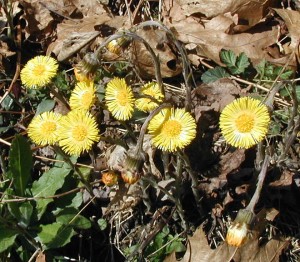
Note that some of the flower heads are stilled bowed down from the night. These flower heads will also rise up once they receive enough sun.
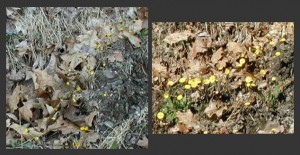
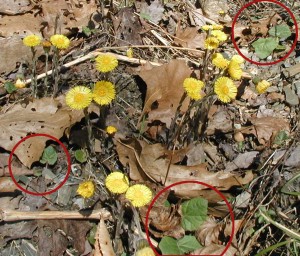
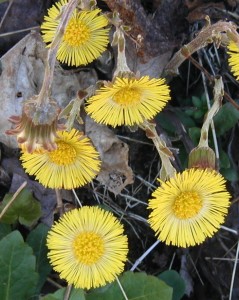
![Reblog this post [with Zemanta]](http://img.zemanta.com/reblog_e.png?x-id=f8b760a2-604b-4bc6-a265-eefc0f5281df)
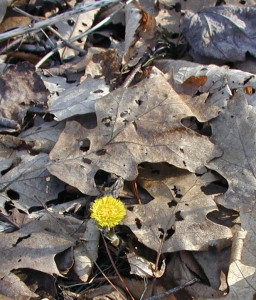
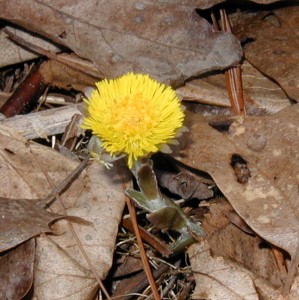
![Reblog this post [with Zemanta]](http://img.zemanta.com/reblog_e.png?x-id=34dfc595-dafa-46d0-9f98-d53ca593981d)